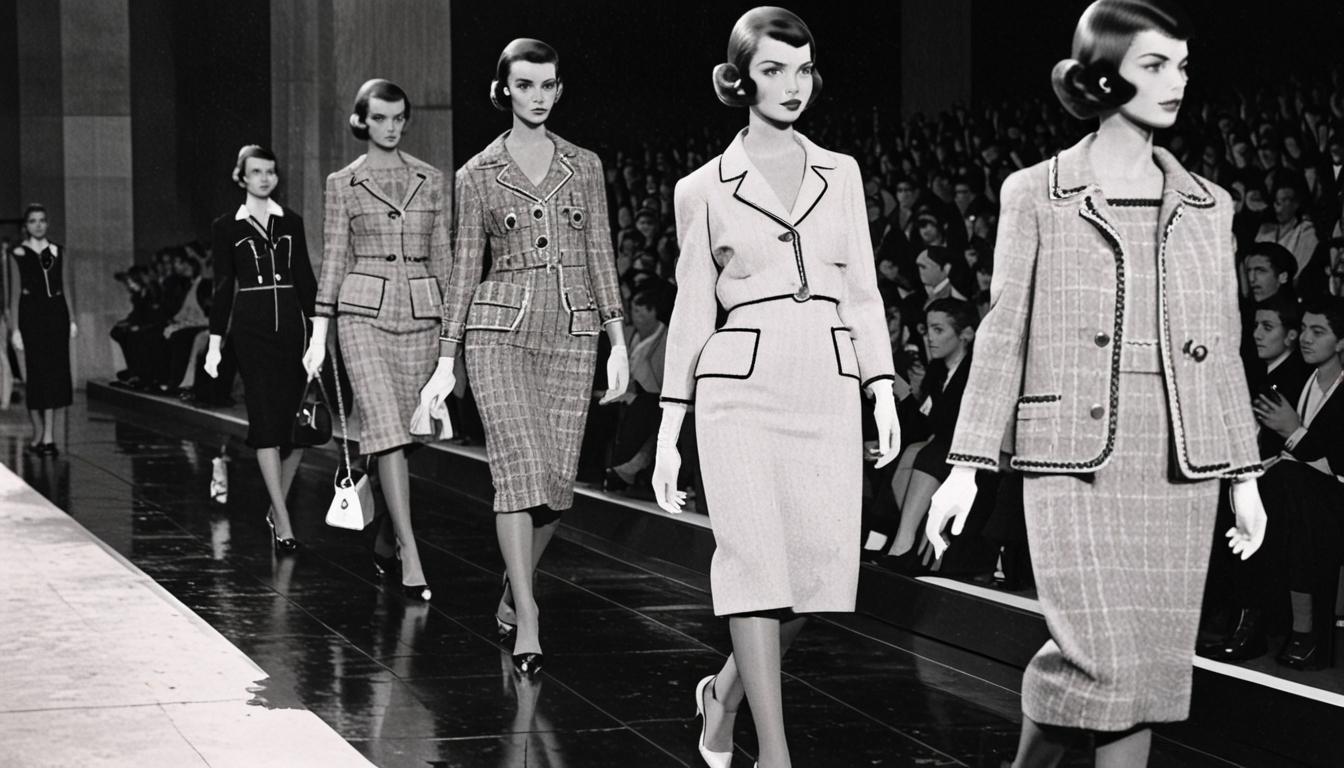In 1954, Coco Chanel made a significant comeback that transformed women’s fashion and showcased her timeless influence in style.
In 1954, Coco Chanel made a significant return to the fashion industry after fifteen years of exile in Switzerland, marking a pivotal moment in style history. The legendary designer, who had long been a proponent of liberating women from restrictive clothing, found herself confronted with the fashion landscape dominated by Christian Dior’s “New Look.” This style, which emphasized corsets and petticoats, was in stark contrast to the comfort and elegance Chanel had championed throughout her career.
On February 5, 1954, Chanel staged a highly anticipated runway show at her iconic location on Rue Cambon in Paris. The event showcased her new collection, drawing an audience that included the elite of Parisian society as well as young celebrities. Although her designs were met with harsh criticism from some fashion insiders who deemed them outdated, Chanel remained unperturbed. Speaking to an audience that extended beyond the French fashion scene, she noted her intention to design for women, not just for the fashion houses of Paris.
As Chanel’s influence began to resonate, particularly in the United States, magazines such as Vogue and Life featured her on their covers. American women especially embraced her revolutionary designs, recognizing the power behind her creations. Chanel’s garments, especially the iconic Chanel suit, which featured a collarless jacket and chain-hemmed design, became a symbol of empowerment for women in a post-war world. The suit was notably worn by Jackie Kennedy during a fateful moment in history—the day of President John F. Kennedy’s assassination.
Chanel continued to innovate with the introduction of the 2.55 bag, which is often recognized as the first women’s shoulder bag. This design catered to women’s need for practicality without sacrificing style. As she explained, “I got tired of holding my bag in my hand and losing it,” reflecting her understanding of women’s lives and needs. The bag’s quilted design and leather strap showcased both aesthetic appeal and functional design elements.
Beyond bags and suits, Chanel’s influence extended to footwear with her introduction of the two-tone slingback shoe. This style, featuring a low heel and contrasting toe, was crafted to enhance the gracefulness of women’s legs, merging elegance with comfort. Throughout her second chapter in fashion, Chanel created a wide array of clothing and accessories that sent a message of freedom and empowerment.
As her designs captivated women around the globe, Chanel demonstrated that elegance transcends age and societal norms. Her ability to defy conventions reaffirmed her status as a revolutionary figure in fashion. Ultimately, Chanel’s return highlighted a timeless ethos that continues to resonate within the fashion world today.
To commemorate her enduring legacy, a new book titled “Coco Chanel – A Revolutionary” is set to be released this Sunday alongside Kathimerini, offering Greek readers an engaging exploration of her life, style, and iconic contributions to fashion history.
Source: Noah Wire Services




